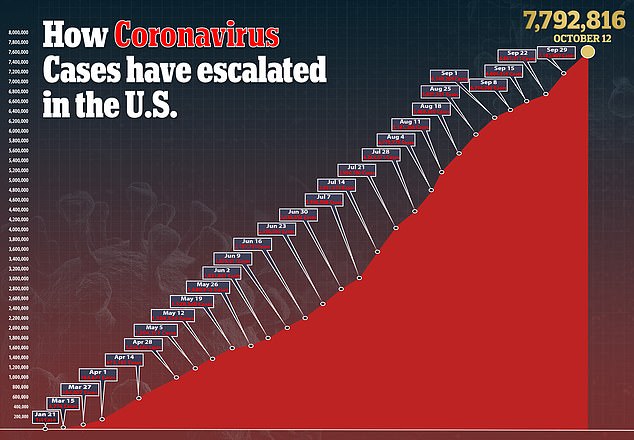Rapidly increasing caseloads across Europe and the United States are raising grave fears of another surge in coronavirus cases as winter approaches and people around the world chafe under pandemic restrictions that impede their daily lives — and their livelihoods.
Officials are scrambling to devise targeted restrictions on business, schools and travel, in the hope of avoiding the blanket lockdowns that paralyzed economic activity in the spring.
But that may be impossible.
Today, President Emmanuel Macron of France announced that, starting on Saturday, the authorities will impose a curfew from 9 p.m. to 6 a.m. in the Paris region and around eight other major cities.
The curfews will run for at least four weeks.
The measure is part of a renewed state of emergency that allows the national government to restrict public gatherings and movement countrywide.
It was first declared in the spring but had ended in July.
“We need this — and if we don’t want to take harsher measures in 15 days, or three weeks, or one month, we have to do it and comply with it,” Macron said.
He said the government would seek a two-week extension of the curfew in Parliament, for a total of six weeks.
It is to be applied in the regions of Paris, Grenoble, Lille, Lyon, Aix-en-Provence and Marseille, Montpellier, Rouen, St.-Etienne and Toulouse, affecting roughly 18 million residents.
In Germany today, Chancellor Angela Merkel of Germany and state governors agreed to nationwide restrictions on social gatherings and domestic travel, in response to a rise in infections.
“I am convinced that what we do — and what we don’t do — in these coming days and weeks will be decisive in how we get through this pandemic,” Merkel at a news conference.
In 10 days, she said, the authorities will discuss if stricter guidelines are needed.
France, Spain and the United Kingdom have all recorded more cases per capita than the United States over the seven days ending Tuesday.
Over the same time period, the virus death rates ticked above 1 per 100,000 in all of those countries except for France, where it was at 0.9, but they remain far below the early days of the pandemic.
There is also growing concern about the damage a second virus wave could sow in the formerly Communist countries of Central Europe, many of which have weak health care systems facing critical shortages of doctors and nurses and inadequate testing programs.
In the Czech Republic, virus deaths reached 2.9 per 100,000 people for the seven days ending Tuesday.
And in Russia, which reported its largest daily increase in infections today, President Vladimir Putin sought refuge from the torrent of bad news by announcing that the Russian government had approved a second vaccine.
The International Federation of Red Cross and Red Crescent Societies today urged European governments to take action quickly to protect those vulnerable to the virus, and to its disastrous economic effects.
“We know it is a very difficult moment which requires difficult decisions: solving the health crisis will help solve the economic and social one,” said Dr. Emanuele Capobianco, head of health and care for the organization.
Across the Atlantic, cases are trending upward in 39 American states, pushing the country’s case curve to its highest level since August.
Those states include much of the Northeast, which is starting to backslide after months of progress, the Midwest and Mountain West, where uncontrolled outbreaks have strained hospitals.
Hospital beds are filling with virus patients, especially in the Northern Plains states, according to data compiled by the Covid Tracking Project. Its data showed that 36,051 people were hospitalized with Covid-19 as of Tuesday evening, a higher number than at any time since Aug. 29.
Even as testing remains insufficient in much of the country, 16 states each added more new cases in the seven-day period ending Monday than they had in any other weeklong stretch of the pandemic.
North Dakota and South Dakota are reporting more new cases per person than any state has previously.
And in Wisconsin, home to 10 of the country’s 20 metro areas with the highest rates of recent cases, crews are preparing a field hospital at the state fairgrounds.
“While we are hopeful we can flatten the curve enough to never have to use the facility, Wisconsinites across our state are struggling and they are rightfully scared of this virus,” Gov. Tony Evers wrote to legislative leaders this week.

